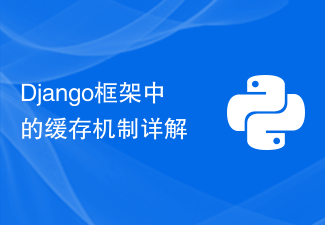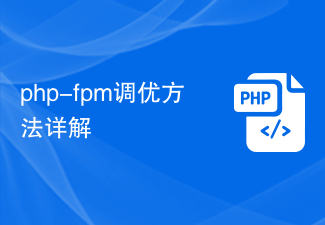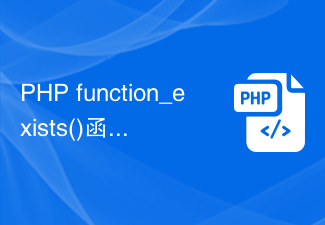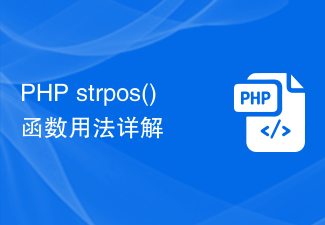The
one() function is used to bind one-time event processing functions to one or more events for each matching element.
In addition, you can also pass some additional required data to the event handling function.
The event processing functions bound through the one() function are all one-time, and the event processing function will only be executed when the event is triggered for the first time. After triggering, jQuery will remove the current event binding.
In addition, you can bind multiple one-time event handlers to the same element and the same event type. When an event is triggered, jQuery will execute the bound event processing functions in the order of binding.
To delete an event bound via one(), use the unbind() or off() function.
This function belongs to the jQuery object (instance).
Syntax
jQuery 1.1 Added this function. The one() function mainly has the following two forms of usage:
Usage one:
jQueryObject.one(events [, data], handler)
For each match The specified event binding event handler of the element.
Usage 2: jQuery 1.7 newly supports this usage.
jQueryObject.one( events , selector [, data ], handler )
Bind events on each matching element to the specified event for all descendant elements that match the specified selector (selector) processing function.
Usage 3: jQuery 1.7 newly supports this usage.
jQueryObject.one( eventsMap [, selector ] [, data ] )
Variations of the previous two usages. eventsMap is an object, each of its attributes corresponds to the parameter events, and the attribute value corresponds to the parameter handler.
Parameters
Parameter Description
events String type One or more event types separated by spaces and optional namespace, such as "click ","focus click","keydown.myPlugin".
data Optional/Any type of data that needs to be passed to the event processing function through event.data when an event is triggered.
The event processing function specified by the handler Function type.
selector String type is a jQuery selector used to specify which descendant elements can trigger bound events.
eventsMap Object type is an Object object, each attribute corresponds to the event type and optional namespace (parameter events), and the attribute value corresponds to the bound event processing function (parameter handler) .
Starting from jQuery 1.7, the usage of the one() function is exactly the same as the on() function, except that the one() function is bound to one-time event processing functions.
For the optional namespace in the parameter events (only supported in 1.4.3+), please refer to the sample code below.
Regarding the parameter selector, you can simply understand it as: if the parameter is equal to null or omitted, the event is bound to the current matching element; otherwise, it is the descendant element of the current matching element that matches the selector selector. Element binding event.
This in the parameter handler points to the DOM element that triggers the event among the descendant elements of the current matching element. If the selector parameter is null or omitted, this points to the current matching element (that is, the element).
on() will also pass in a parameter for the handler: the Event object representing the current event.
The return value of the parameter handler has the same effect as the return value of the DOM native event processing function. For example, the event handler function of the "submit" (form submission) event returns false, which can prevent the form from being submitted.
If the event processing function handler only returns a false value, you can directly set the handler to false.
If the current element has multiple descendant elements that match the selector, as long as any of the descendant elements triggers the execution of the event processing function, the event binding on the current element will be removed. Other descendant elements cannot trigger execution again.
Return value
one()The return value of the function is of jQuery type and returns the current jQuery object itself.
Example & Description
Please refer to the following initial HTML code:
<input id="btn" type="button" value="点击" />
<div id="n1">
<p id="n2">段落文本内容1</p>
<p id="n3">段落文本内容2</p>
<span id="n4">隐藏关卡</span>
</div>
<div id="n5">
<p id="n6">段落文本内容3</p>
<p id="n7">段落文本内容4</p>
</div>
<p id="n8">专注于编程开发技术分享</p>We bind a one-time click event to the button in the above HTML:
// 只有第一次点击时,执行该事件处理函数
// 执行后one()会立即移除绑定的事件处理函数
$("#btn").one("click", function(){
alert("只弹出一次提示框!");
}); In addition, we can also bind multiple events at the same time and pass some additional data to the event processing function. We can process it through the parameter event (Event event object) passed in by jQuery for the event processing function:
$("#n4").one("mouseenter mouseleave", obj, function(event){
var obj = event.data;
var $me = $(this);
if(event.type == "mouseenter"){
$me.html( obj.name + ',你碰到了隐藏关卡,获得' + obj.hidden + "金币!" );
}else{
$me.html( '你已通过该关卡!' );
}
});In addition, if the qualifying element is newly added after the one() function is executed, the binding event will still take effect on it. Taking the initial HTML code as an example, we can write the following jQuery code:
Note: Although the following jQuery code binds click events to all descendant p elements of the n1 element, the event handler itself is bound On the n1 element, the click event of the descendant p element is delegated to the n1 element for processing. As long as any one of n2, n3, and n9 triggers the click event, the event handler bound to the body element will be removed. In other words, n2, n3, and n9 can only execute the event processing function once in total.
// 在n1元素上为所有后代p元素的click事件绑定事件处理函数
// 只有n2、n3可以触发该事件
$("#n1").one("click", "p", function(event){
alert( $(this).text() );
});
//新添加的n9也可以触发上述click事件,因为它也是n1的后代p元素
$("#n1").append('<p id="n9">上述绑定的一次性click事件也会对该元素也生效!</p>');Please refer to the following jQuery code again. There are two div elements, so each div element has an event handler bound to the click event of the descendant p element.
// 在每个div元素上为其后代p元素的click事件绑定事件处理函数
// 只有n2、n3、n6、n7可以触发该事件
// n2和n3两者总共只能触发一次,n6和n7两者总共只能触发一次
$("div").one("click", "p", function(event){
alert( $(this).text() );
});参数events还支持为事件类型附加额外的命名空间。当为同一元素绑定多个相同类型的事件处理函数时。使用命名空间,可以在触发事件、移除事件时限定触发或移除的范围。
function clickHandler(event){
alert( "触发时的命名空间:[" + event.namespace + "]");
}
var $p = $("p");
// A:为所有p元素绑定click事件,定义在foo和bar两个命名空间下
$p.one( "click.foo.bar", clickHandler );
// B:为所有p元素绑定click事件,定义在test命名空间下
$p.one( "click.test", clickHandler );
var $n2 = $("#n2");
/* 由于one()函数绑定的事件处理函数是一次性的,因此下面的每行代码只能分别执行,无法同时执行 */
// 触发所有click事件
$n2.trigger("click"); // 触发A和B (event.namespace = "")
// 触发定义在foo命名空间下的click事件
// $n2.trigger("click.foo"); // 触发A (event.namespace = "foo")
// 触发定义在bar命名空间下的click事件
// $n2.trigger("click.bar"); // 触发A (event.namespace = "bar")
// 触发同时定义在foo和bar两个命名空间下的click事件
// $n2.trigger("click.foo.bar"); // 触发A (event.namespace = "bar.foo")
// 触发定义在test命名空间下的click事件
// $n2.trigger("click.test"); // 触发B (event.namespace = "test")
one()函数的参数eventsMap是一个对象,可以"属性-值"的方式指定多个"事件类型-处理函数"。对应的示例代码如下:
var eventsMap = {
"mouseenter": function(event){
$(this).html( "Hello!");
},
"mouseleave": function(event){
$(this).html( "Bye!");
}
};
//为n5绑定mouseenter mouseleave两个事件
$("#n5").one( eventsMap );The above is the detailed content of Detailed explanation of jQuery.one() function usage examples. For more information, please follow other related articles on the PHP Chinese website!
 C++中的众数函数详解Nov 18, 2023 pm 03:08 PM
C++中的众数函数详解Nov 18, 2023 pm 03:08 PMC++中的众数函数详解在统计学中,众数指的是一组数据中出现次数最多的数值。在C++语言中,我们可以通过编写一个众数函数来找到任意一组数据中的众数。众数函数的实现可以采用多种不同的方法,下面将详细介绍其中两种常用的方法。第一种方法是使用哈希表来统计每个数字出现的次数。首先,我们需要定义一个哈希表,将每个数字作为键,出现次数作为值。然后,对于给定的数据集,我们遍
 C++中的取余函数详解Nov 18, 2023 pm 02:41 PM
C++中的取余函数详解Nov 18, 2023 pm 02:41 PMC++中的取余函数详解在C++中,取余运算符(%)用于计算两个数相除的余数。它是一种二元运算符,其操作数可以是任何整数类型(包括char、short、int、long等),也可以是浮点数类型(如float、double)。取余运算符返回的结果与被除数的符号相同。例如,对于整数的取余运算,我们可以使用以下代码来实现:inta=10;intb=3;
 Vue.nextTick函数用法详解及在异步更新中的应用Jul 26, 2023 am 08:57 AM
Vue.nextTick函数用法详解及在异步更新中的应用Jul 26, 2023 am 08:57 AMVue.nextTick函数用法详解及在异步更新中的应用在Vue开发中,经常会遇到需要进行异步更新数据的情况,比如在修改DOM后需要立即更新数据或者在数据更新后需要立即进行相关操作。而Vue提供的.nextTick函数就是为了解决这类问题而出现的。本文就会详细介绍Vue.nextTick函数的用法,并结合代码示例来说明它在异步更新中的应用。一、Vue.nex
 Django框架中的缓存机制详解Jun 18, 2023 pm 01:14 PM
Django框架中的缓存机制详解Jun 18, 2023 pm 01:14 PM在Web应用程序中,缓存通常是用来优化性能的重要手段。Django作为一款著名的Web框架,自然也提供了完善的缓存机制来帮助开发者进一步提高应用程序的性能。本文将对Django框架中的缓存机制进行详解,包括缓存的使用场景、建议的缓存策略、缓存的实现方式和使用方法等方面。希望对Django开发者或对缓存机制感兴趣的读者有所帮助。一、缓存的使用场景缓存的使用场景
 php-fpm调优方法详解Jul 08, 2023 pm 04:31 PM
php-fpm调优方法详解Jul 08, 2023 pm 04:31 PMPHP-FPM是一种常用的PHP进程管理器,用于提供更好的PHP性能和稳定性。然而,在高负载环境下,PHP-FPM的默认配置可能无法满足需求,因此我们需要对其进行调优。本文将详细介绍PHP-FPM的调优方法,并给出一些代码示例。一、增加进程数默认情况下,PHP-FPM只启动少量的进程来处理请求。在高负载环境下,我们可以通过增加进程数来提高PHP-FPM的并发
 PHP function_exists()函数用法详解Jun 27, 2023 am 10:32 AM
PHP function_exists()函数用法详解Jun 27, 2023 am 10:32 AM在PHP开发中,有时我们需要判断某个函数是否可用,这时我们便可以使用function_exists()函数。本文将详细介绍function_exists()函数的用法。一、什么是function_exists()函数?function_exists()函数是PHP自带的一个内置函数,用于判断某个函数是否被定义。该函数返回一个布尔值,如果函数存在返回True,
 PHP strpos()函数用法详解Jun 27, 2023 am 10:43 AM
PHP strpos()函数用法详解Jun 27, 2023 am 10:43 AMPHPstrpos()函数用法详解在PHP编程中,字符串处理是非常重要的一部分。PHP通过提供一些内置函数来实现字符串处理。其中,strpos()函数就是PHP中最常用的一个字符串函数之一。该函数的目的是在一个指定的字符串中搜索另一个指定字符串的位置,如果包含则返回这个位置,否则返回false。本文将通过详细分析PHPstrpos()函数的用法,助你更好
 Gin框架的模板渲染功能详解Jun 22, 2023 pm 10:37 PM
Gin框架的模板渲染功能详解Jun 22, 2023 pm 10:37 PMGin框架是目前非常流行的Go语言Web框架之一。作为一个轻量级的框架,Gin提供了丰富的功能和灵活的架构,使得它在Web开发领域中备受欢迎。其中一个特别重要的功能是模板渲染。在本文中,我们将介绍Gin框架的模板渲染功能,并深入了解它的实现原理。一、Gin框架的模板渲染功能Gin框架使用了多种模板渲染引擎来构建Web应用程序。目前,它支持以下几种模板引擎:


Hot AI Tools

Undresser.AI Undress
AI-powered app for creating realistic nude photos

AI Clothes Remover
Online AI tool for removing clothes from photos.

Undress AI Tool
Undress images for free

Clothoff.io
AI clothes remover

AI Hentai Generator
Generate AI Hentai for free.

Hot Article

Hot Tools

Atom editor mac version download
The most popular open source editor

Dreamweaver CS6
Visual web development tools

Safe Exam Browser
Safe Exam Browser is a secure browser environment for taking online exams securely. This software turns any computer into a secure workstation. It controls access to any utility and prevents students from using unauthorized resources.

MantisBT
Mantis is an easy-to-deploy web-based defect tracking tool designed to aid in product defect tracking. It requires PHP, MySQL and a web server. Check out our demo and hosting services.

Zend Studio 13.0.1
Powerful PHP integrated development environment






